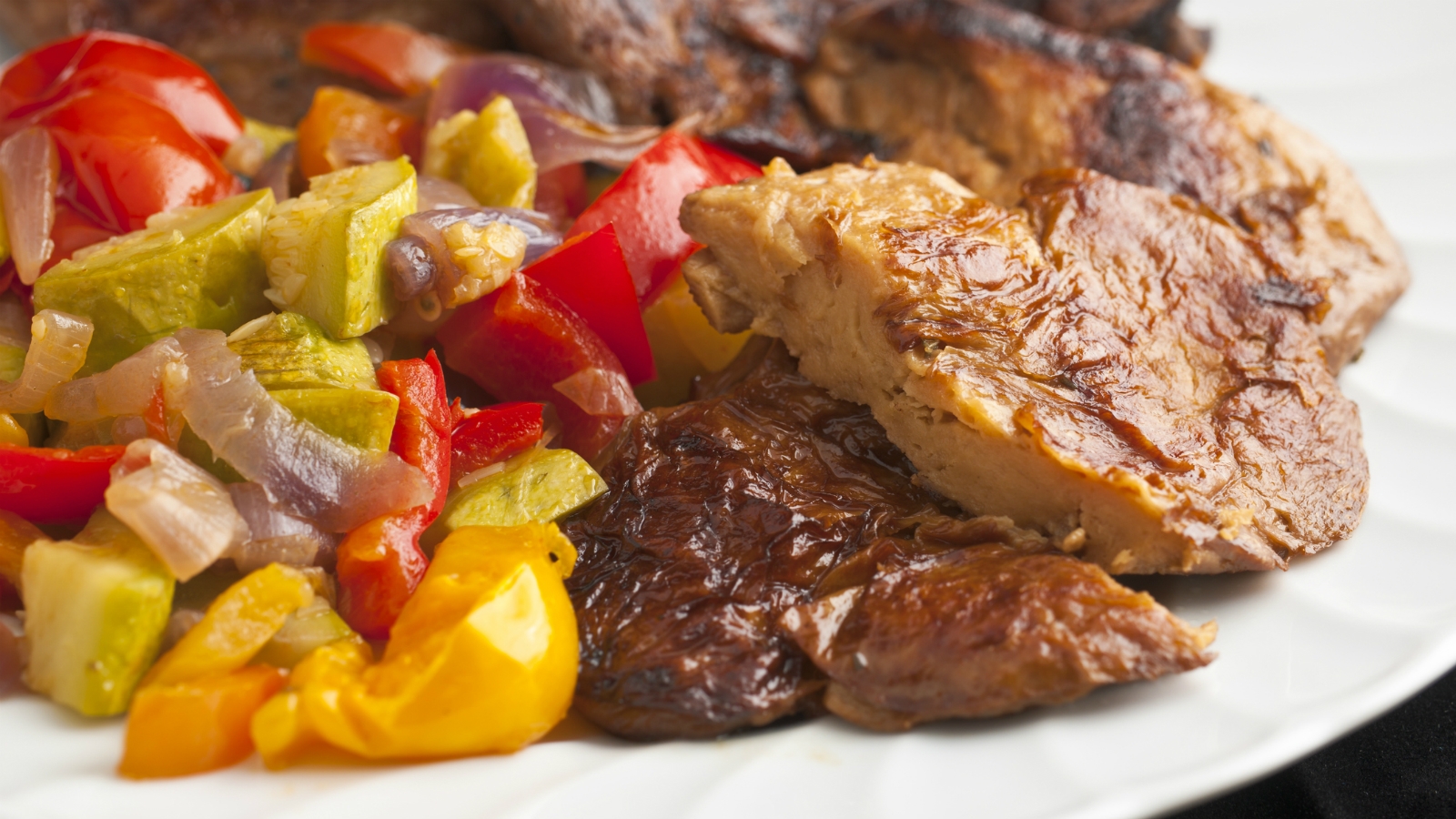Seitan Brisket
A wonderful vegetarian equivalent to the traditional meal dish.
Like many Ashkenazic Jews, I grew up believing that my mother made the best brisket in the world. Fragrant, savory, and unbelievably tender, it was the stuff of holidays, of memories — of sneaking back to the fridge at midnight, long after the guests had gone home. When I decided to become a vegetarian at age 17, I did so with the acute and sorrowful understanding that I was saying goodbye to one of my favorite dishes. Brisket was such a sacred food, that I never even considered trying to recreate it for my meat-free lifestyle … until a friend mentioned that he was trying to “perfect his vegetarian brisket.”
READ: Vegetarianism and Kashrut
Intrigued, I began fiddling with my own version, combining the recipe I found in The Passionate Vegetarian with the tastes I recall from childhood. While the resulting dish is by no means an exact replica of my mother’s, it definitely holds it own on the Rosh Hashanah table or at a Purim feast.
Of course, vegetarian brisket is a rather blatant misnomer, because the word brisket specifically refers to a cut of meat (the “flat, boneless, flavorful cut taken from the breast of a steer,” according to Matthew Goodman’s Jewish Food: The World at Table). However, over time, the concept of brisket–at least “Jewish brisket”–has become almost interchangeable with its preparation: the long, slow braise necessary to soften this tough kosher cut into a steamy pile of juice and meat. In that sense, in the recipe below, “brisket” refers not to a particular ingredient, but rather to a method of cooking, and to the noble search for gastro-Jewish nirvana.
Seitan, a meat substitute made from wheat, is inherently soft and tender, so it does not need to stew for quite as long as traditional brisket. But since your taste buds will quickly become intoxicated by the smell of onions, caraway, tamari, and garlic wafting from the oven, the quicker cooking time is a blessing.
Ingredients
2 Tbsp brown sugar
1 1/2 Tbsp miso paste
1 1/2 Tbsp grape juice or fruity red wine
salt to taste
2 cloves garlic, minced
1/4 cup unbleached flour
3 Tbsp butter or canola oil
freshly ground black pepper
1 teaspoon caraway seeds
1 1/2 Tbsp brown sugar
3/4 cup grape juice or fruity red wine
1 3/4 cups pareve “chicken”-flavored stock or vegetable stock
1/2 Tbsp tamari
15 oz seitan, sliced
2 Tablespoons olive oil
2 medium onions, sliced vertically
2 medium carrots, sliced into 1-inch pieces
2 celery stalks, chopped roughly
Directions
Preheat oven to 375F. Add oil, onions, carrots, celery, and tamari to a heavy baking dish. Stir to coat the veggies and then roast for 40 minutes.
Remove dish from oven and distribute seitan on top of the veggies. Combine stock, juice/wine, brown sugar, and caraway seeds and pour over seitan and veggies. Grind black pepper over top, cover tightly with foil, and return to oven. Bake an additional 40 minutes.
Remove pan, uncover, and ladle out as much of the cooking broth as possible into a large liquid measuring cup. Heat the butter/oil in a skillet over medium heat. Whisk in flour and cook, whisking constantly, for 3 minutes. Slowly whisk in reserved cooking broth, and stir constantly until smooth and thick, 2-3 minutes. If you don’t have enough cooking broth left, add stock to substitute. Stir in half the garlic. Spread sauce onto the seitan, stirring to blend. Add salt to taste, if needed.
Raise oven temperature to broil. Prepare the glaze by whisking the juices/wine, brown sugar, miso, and remaining garlic together. Spoon the glaze over the seitan. Return to the oven and broil, uncovered, until bubbling hot and deeply browned, 5 to 10 minutes. Serve hot.
Purim
Pronounced: PUR-im, the Feast of Lots, Origin: Hebrew, a joyous holiday that recounts the saving of the Jews from a threatened massacre during the Persian period.
Rosh Hashanah
Pronounced: roshe hah-SHAH-nah, also roshe ha-shah-NAH, Origin: Hebrew, the Jewish new year.



